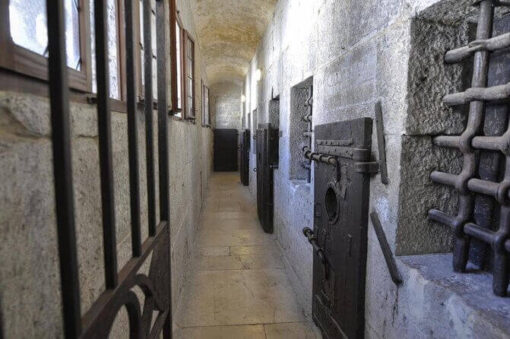The other problem, namely that of the conditions of the prisoners, was not overlooked: the idea of a “new” and “modern” prison had in fact to do with the will to improve this aspect as well. Even if as for “improvement”, the torture room is visible on the second floor, the so-called “innovation” must be considered in relation to the mentality of the time, and therefore it can be said that features of modernity were incorporated into the general lines of the project. The most evident is the well that was built just for the prisoners who could come out of the cell every day to collect water themselves, even if chained and under the observation of the guardians. The food that the inmates received every day was two loaves of fresh half-kilo bread which over time, due to budget cuts, became pan biscotto.
The meat was distributed only on certain occasions: on the occasion of the election of the Doge, for the appointment of some important person in some important institutional position, or during the Carnival on the occasion of the bull hunt, an entertainment show that consisted of hunting of a real bull, which captured, was killed and slaughtered, and whose pieces were then distributed to the prisoners.
The numerous charitable fraternities (called “Scuole” in the local dialect) that existed in Venice, came to carry out their commitment to charitable assistance, bringing food, water, and legal and medical assistance not only to the inmates but also to the poor beggars who camped under the external portico, looking for shelter or hoping for something to eat.
Inside the prison, a doctor visited the inmates every day and a priest was present for the final functions of those who ended their existence here, or for any need for support and comfort.






